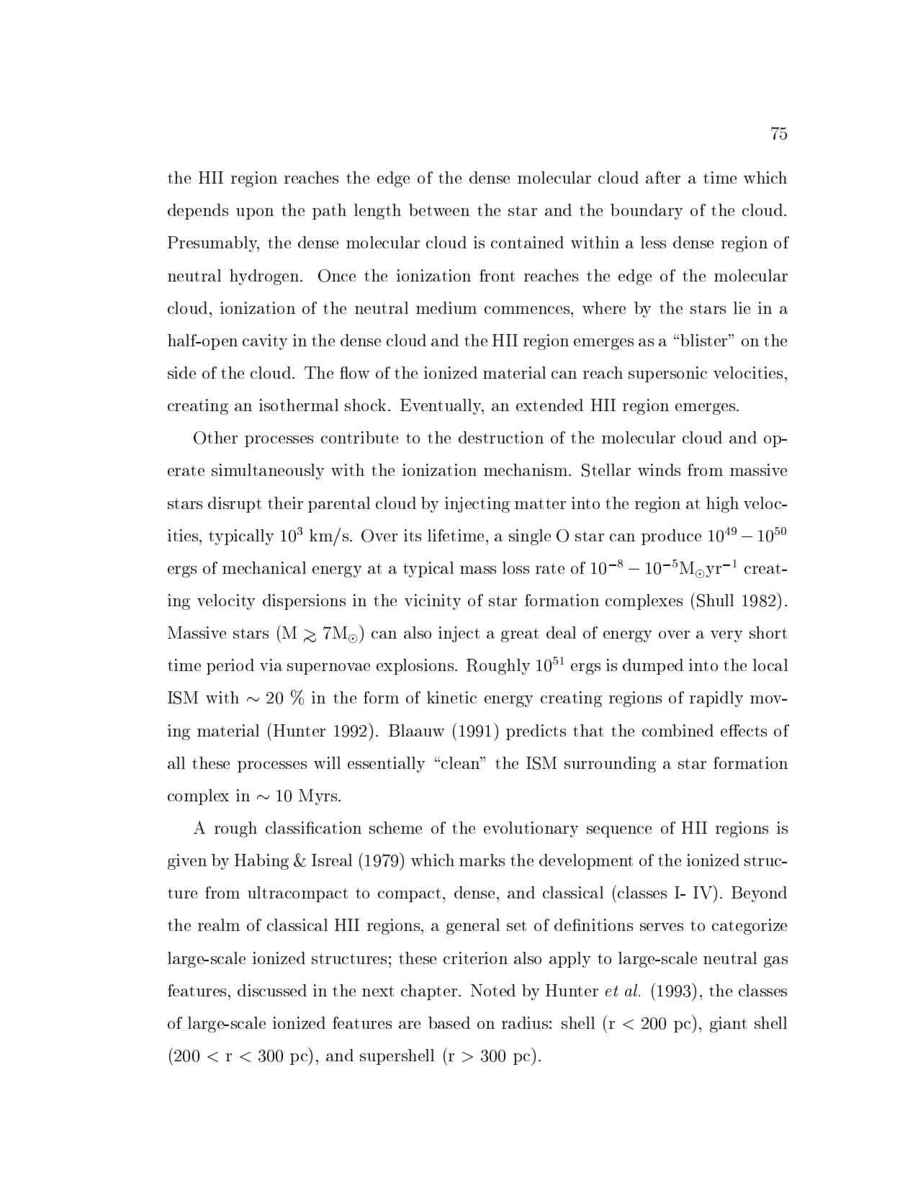
75
the HII region reaches the edge of the dense molecular cloud after a time which
depends upon the path length between the star and the boundary of the cloud.
Presumably, the dense molecular cloud is contained within a less dense region of
neutral hydrogen. Once the ionization front reaches the edge of the molecular
cloud, ionization of the neutral medium commences, where by the stars lie in a
half-open cavity in the dense cloud and the HII region emerges as a blister" on the
side of the cloud. The ow of the ionized material can reach supersonic velocities,
creating an isothermal shock. Eventually, an extended HII region emerges.
Other processes contribute to the destruction of the molecular cloud and op-
erate simultaneously with the ionization mechanism. Stellar winds from massive
stars disrupt their parental cloud by injecting matter into the region at high veloc-
ities, typically 10
3
km s. Over its lifetime, a single O star can produce 10
49
,
10
50
ergs of mechanical energy at a typical mass loss rate of 10
,8
,
10
,5
M yr
,1
creat-
ing velocity dispersions in the vicinity of star formation complexes Shull 1982.
Massive stars M
7M can also inject a great deal of energy over a very short
time period via supernovae explosions. Roughly 10
51
ergs is dumped into the local
ISM with
20 in the form of kinetic energy creating regions of rapidly mov-
ing material Hunter 1992. Blaauw 1991 predicts that the combined e ects of
all these processes will essentially clean" the ISM surrounding a star formation
complex in
10 Myrs.
A rough classi cation scheme of the evolutionary sequence of HII regions is
given by Habing & Isreal 1979 which marks the development of the ionized struc-
ture from ultracompact to compact, dense, and classical classes I- IV. Beyond
the realm of classical HII regions, a general set of de nitions serves to categorize
large-scale ionized structures; these criterion also apply to large-scale neutral gas
features, discussed in the next chapter. Noted by Hunter
et
al.
1993, the classes
of large-scale ionized features are based on radius: shell r 200 pc, giant shell
200 r 300 pc, and supershell r 300 pc.
